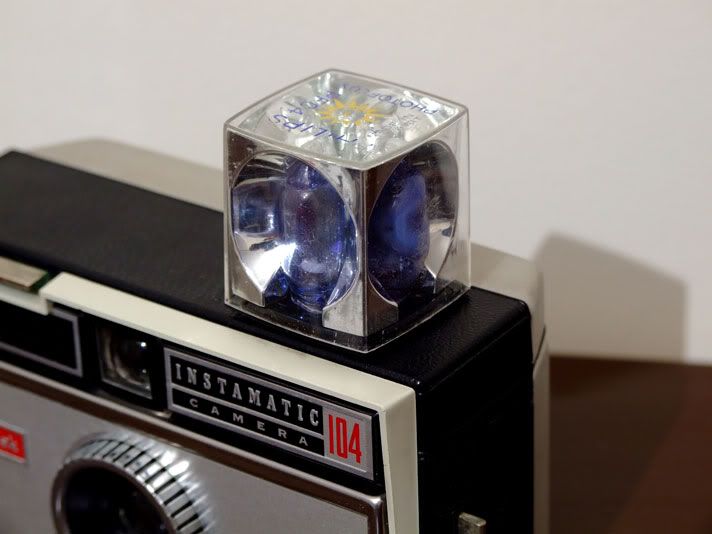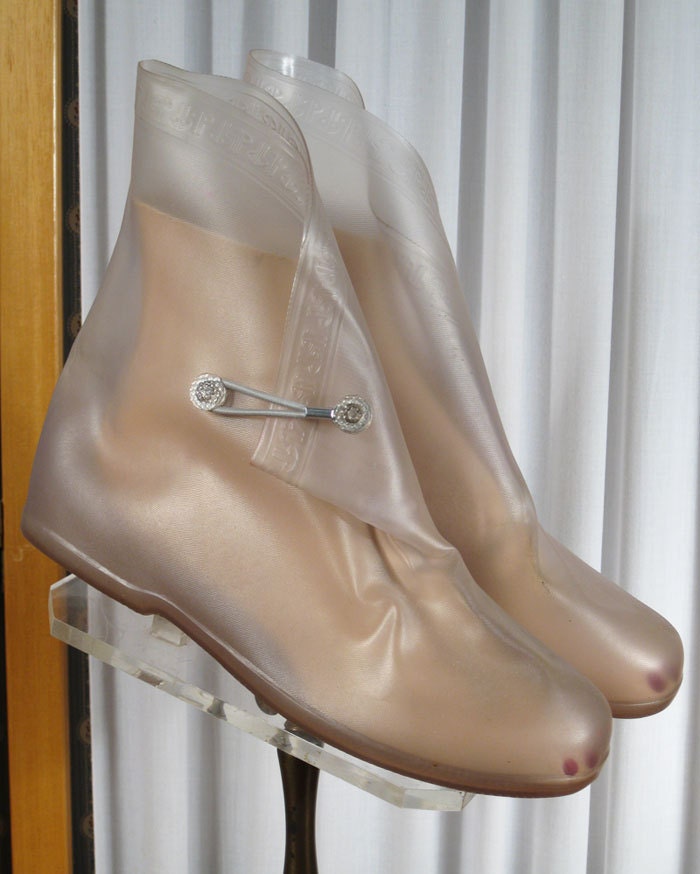|
|
Post by Deleted on Mar 20, 2012 9:10:07 GMT
Flashcubes  |
|
|
|
Post by bixaorellana on Mar 20, 2012 15:30:20 GMT
 That brought back a world of memories!
|
|
|
|
Post by Deleted on Mar 20, 2012 18:30:31 GMT
I think that a flashcube would be an object of mystery among young people, since most of them have not even seen a traditional flashbulb up close. Wow -- I even remember using flashbulbs and how they would have melted bubbles on the surface after flashing.
The main thing I remember about flash pictures from those days is how few of them came out right.
|
|
|
|
Post by bixaorellana on Mar 20, 2012 21:04:01 GMT
This has probably been mentioned, but what about the (male) compulsion to shake polaroid pictures until they were dry?
|
|
|
|
Post by Deleted on Mar 20, 2012 21:59:20 GMT
I never saw that because nobody in my family ever had a Polaroid camera and the few people I knew who had one never shook the photos. They usually just put them on a table or something and we all waited for the result.
|
|
|
|
Post by bixaorellana on Mar 21, 2012 5:13:16 GMT
Oh. Then they were all either women or models of restraint.
I can remember a photo session with my dad & brother, among other people. Daddy & brother could not be convinced to simply put the pictures down for the requisite 60 seconds. My brother finally said, "It must be the right thing to do, since we feel so compelled to do it!"
|
|
|
|
Post by Deleted on Mar 21, 2012 6:33:36 GMT
The only photos that one would shake would be the ones coming out of a photomaton because they were still wet. But not anymore -- the photos come out dry.
|
|
|
|
Post by bixaorellana on Mar 21, 2012 7:15:11 GMT
photomaton = photo booth?
I didn't remember that they came out wet.
Odd that real memories of using those booths have been pretty much knocked out & replaced by images from the movie Amélie.
Wait -- I think I have a vague memory of the strip being sort of curled when it fell into that little cage thing on the outside of the booth. It also seems to me that it cost a dollar, but I wouldn't swear to that.
|
|
|
|
Post by onlymark on Mar 21, 2012 9:09:07 GMT
I do remember trying to get the curled photostrip out of the machine and smearing them with my ham fisted fingers.
|
|
|
|
Post by bixaorellana on Mar 24, 2012 1:00:58 GMT
|
|
|
|
Post by Deleted on Mar 24, 2012 6:10:51 GMT
That does not ring a bell at all.
|
|
|
|
Post by bixaorellana on Mar 24, 2012 7:03:25 GMT
It's obliquely referred to further up on this page.
|
|
|
|
Post by Deleted on Mar 24, 2012 7:05:38 GMT
Well, now I see Polaroid written on it, but I have still never seen that object. So that would be the film container?
|
|
|
|
Post by bixaorellana on Mar 24, 2012 7:28:09 GMT
No. The spongy part contained the chemicals that you swiped across the picture to develop it. www.polaroidland.net/2012/01/20/instant-artifact-print-coater/print coater goo: Isopropanol/Isopropyl alcohol, 5-15% Zinc acetate dihydrate, 2-5% Glacial acetic acid, 3-7% ......... it contains an organic heterocyclic compound, that is, more specifically it is a ring system with nitrogen and carbon. It may be a piperazine or piperadine compound or something like that. It is what gives it that strange peppery odor. There is also a lacquer and another solvent there. source |
|
|
|
Post by Deleted on Mar 24, 2012 11:55:25 GMT
Clearly one has to have owned a Polaroid camera to know about that. I never had any idea what was in them.
|
|
|
|
Post by bixaorellana on Mar 24, 2012 16:22:30 GMT
I had one when I was in high school, but until I googled it yesterday, I couldn't have told you what was in the coating compound. Clearly one has to have owned a Polaroid camera to know about that. I never had any idea what was in them. Well, you either had to have owned one or been around someone who did and to have fixated on that particular quirky detail of the camera. Type 41
Produced: 1950-1959 / Original Price: $?.??
Film speed: ASA 100
Orthochromatic, B&W
Notes: This was Polaroid's first true B&W film. Not long after it hit the market, customers and Polaroid engineers discovered that prints made from this film sometimes would start to fade after a few months. Unlike the sepia prints, the chemistry of the new B&W film left the prints not completely stable, and subject to attack by humidity and contaminants in the air. After much research by Dr. Land and other Polaroid engineers, the only solutions that could be found at the time involved the application of a fixing agent to each print by the customer. Thus was born the "Print Coater" that became so familiar to Polaroid photographers. Research continued on solving the "coater problem," but it wasn't until the early 1970's when a coaterless B&W Polaroid film could be brought to market. Even today, there are still a few Polaroid B&W film types that require coating after development.
Even after improved film types (Types 42, 43, 44) were introduced, Type 41 continued to be offered as a slightly cheaper alternative film for situations (such as print copying) where panchromatic response wasn't important or necessary. source |
|
|
|
Post by bixaorellana on Apr 21, 2012 19:41:20 GMT
Just found this on my facebook page, with the caption "age test -- do you know what this is?"  |
|
|
|
Post by Deleted on Apr 21, 2012 23:05:35 GMT
Obviously, I know what those are. I was remembering French telephones which until the 1990's had an extra earpiece for a second person to listen to the conversation. Of course, speaker phones did away with that.  |
|
|
|
Post by tod2 on Apr 22, 2012 13:41:09 GMT
Bixa those are speakers that you hooked onto your window at the Drive-in - Gawd, its 40 years since I last hooked one up, listened to it intermittently crackle, moved to another spot and tested those speakers 'till we we satisfied we had good clarity for the movie! Aaah! those were the days.........  |
|
|
|
Post by imec on Apr 22, 2012 18:36:11 GMT
At our drive-inns, they also provided electric heaters in winter.
|
|
|
|
Post by Deleted on Apr 22, 2012 18:57:36 GMT
How did that work, imec?
|
|
|
|
Post by imec on Apr 22, 2012 21:38:49 GMT
|
|
|
|
Post by bjd on Apr 23, 2012 10:04:15 GMT
I'm old enough but didn't recognize those things because I have never been to a drive-in movie.
|
|
|
|
Post by bixaorellana on Apr 23, 2012 15:32:14 GMT
How did that happen, Bjd -- didn't they have them where you lived? When I was in high school in Savannah, the drive-in movies were hotbeds of teen smooching. There were guards who'd go around shining flashlights into the cars to ward off Other Stuff. This led to legends such as the kids who were so startled by the flashlight that they "locked" together & had to be taken to the emergency room in that condition, whereupon of course their parents were called!!!I have a vague idea I might remember the heaters, but I'm not sure. Definitely don't remember this advance in drive-in comfort: home.earthlink.net/~stevekraus/diac.htm |
|
|
|
Post by bjd on Apr 23, 2012 16:31:48 GMT
I lived in a big city -- we went to the movies in movie theatres. I have no idea where you would have had to go for a drive-in -- out in the boonies somewhere?
|
|
|
|
Post by Deleted on Apr 23, 2012 16:38:41 GMT
I'm not even sure the drive-ins were open in the winter where I lived -- which is why I have never heard of or seen the heaters.
|
|
|
|
Post by bjd on Apr 28, 2012 19:14:27 GMT
I was just reading the thread about olfactory recall, when I remembered these things and that I used to like the smell. As I recall, they were worn with shoes inside.  |
|
|
|
Post by bixaorellana on Apr 28, 2012 22:34:09 GMT
Oh god, yes! I'd forgotten about those, but they were around for ages. & yes, shoes inside.
The new ones had the same smell that certain baby dolls had.
|
|
|
|
Post by Kimby on Apr 28, 2012 22:45:16 GMT
Probably BPA, or some other deadly toxin!
|
|
|
|
Post by foreverman on May 3, 2012 11:57:15 GMT
Does anyone remember the Commodore 64 PC.................It was my first computer in 1981
 |
|